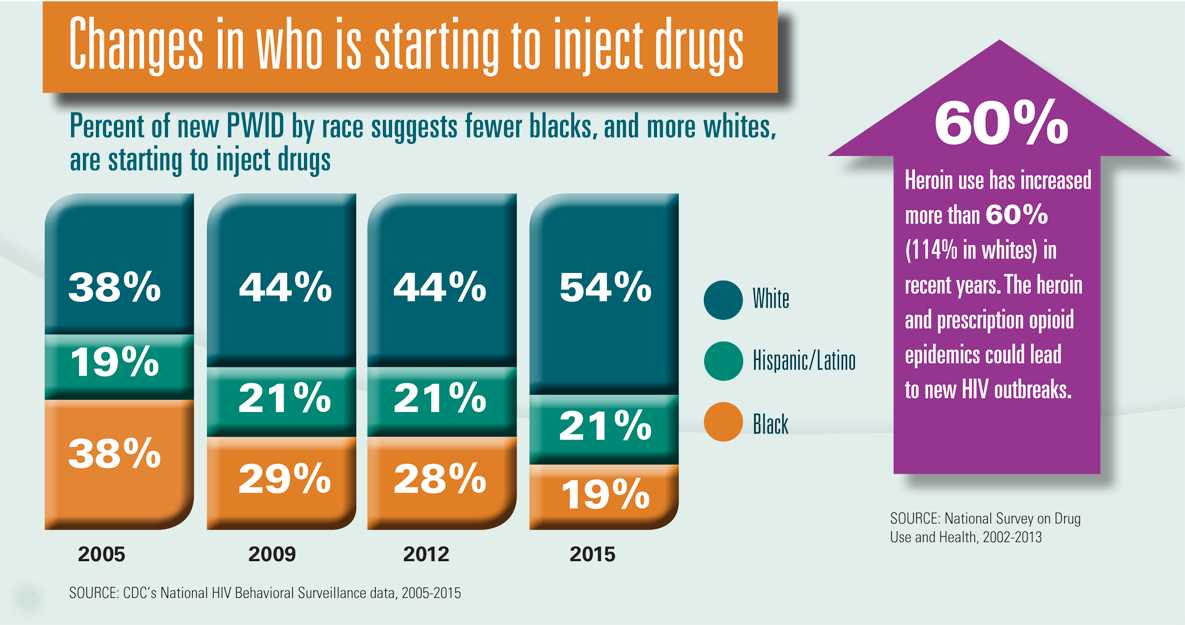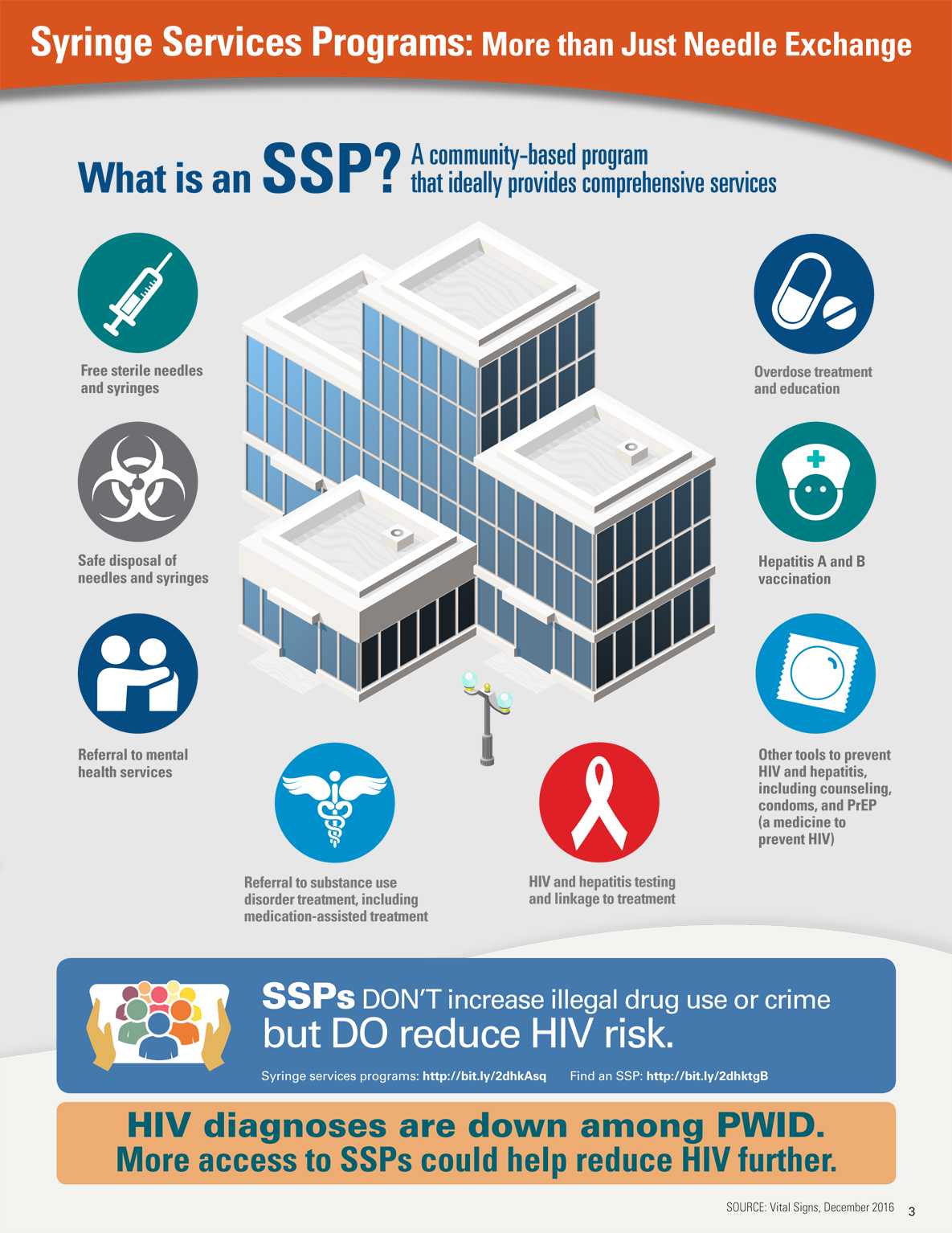HIV and Injection Drug Use
Syringe Services Programs for HIV Prevention
Changes in who is starting to inject drugs
The percent of new PWID by race has changed over time, suggesting fewer blacks, and more whites, are starting to inject drugs.
| 2005 | 2009 | 2012 | 2015 | |
| White | 38% | 44% | 44% | 54% |
| Hispanic/Latino | 19% | 21% | 21% | 21% |
| Black | 38% | 29% | 28% | 19% |
SOURCE: CDC’s National HIV Behavioral Surveillance data, 2005-2015
Arrow Graphic
Heroin use has increased more than 60% (114% in whites) in recent years. The heroin and prescription opioid epidemics could lead to new HIV outbreaks.
SOURCE: National Survey on Drug Use and Health, 2002-2013
Syringe Services Programs: More than Just Needle Exchange
An SSP is a community-based program that ideally provides comprehensive services:
- free sterile needles and syringes
- safe disposal of needles and syringes
- referral to mental health services and substance use disorder treatment, including medication-assisted treatment
- HIV and hepatitis testing and linkage to treatment
- other tools to prevent HIV and hepatitis, including counseling, condoms, and PrEP (a medicine to prevent HIV)
- hepatitis A and B vaccination
- overdose treatment and education
SSPs don’t increase illegal drug use or crime but do reduce HIV risk.
Syringe services programs: http://bit.ly/2dhkAsq Find an SSP: http://bit.ly/2dhktgB
HIV diagnoses are down among PWID. More access to SSPs could help reduce HIV further.
SOURCE: Vital Signs, December 2016
- Page last reviewed: July 28, 2017
- Page last updated: July 28, 2017
- Content source:
- National Center for HIV/AIDS, Viral Hepatitis, Sexual Transmitted Diseases and Tuberculosis Prevention
- Page maintained by: Office of the Associate Director for Communications (OADC)


 ShareCompartir
ShareCompartir

